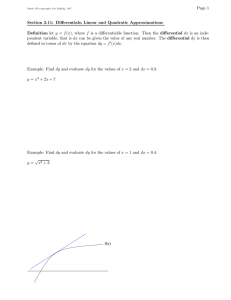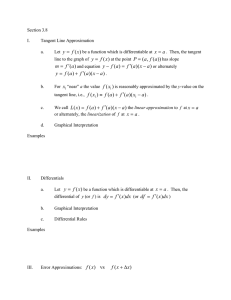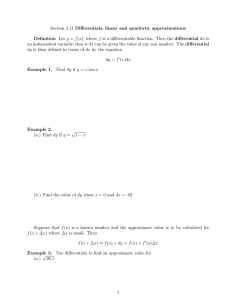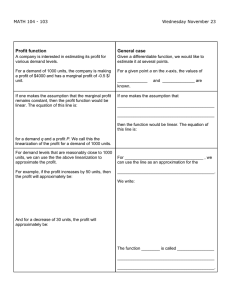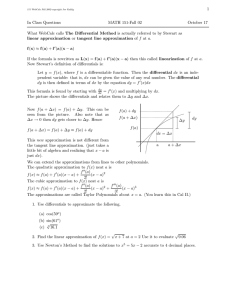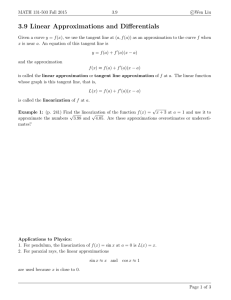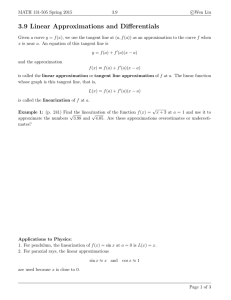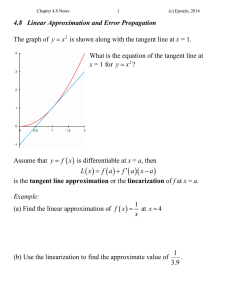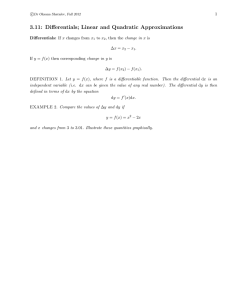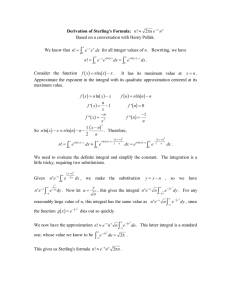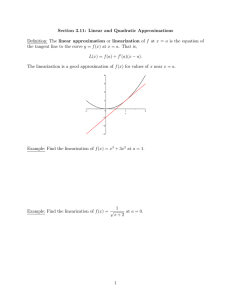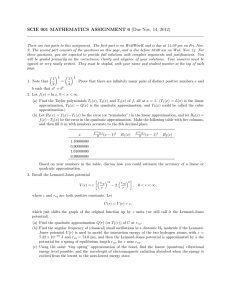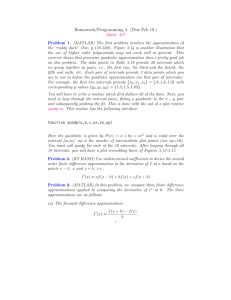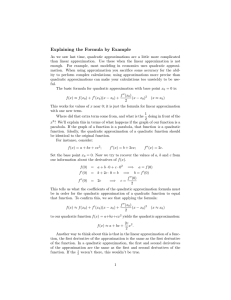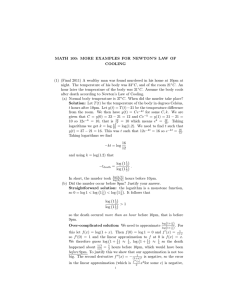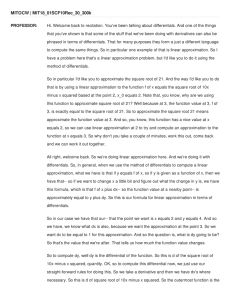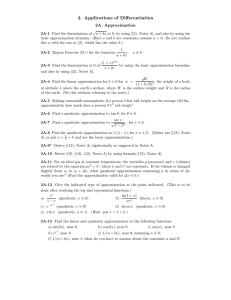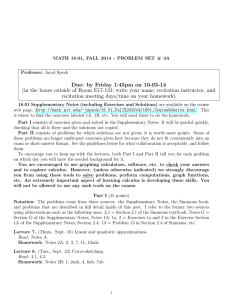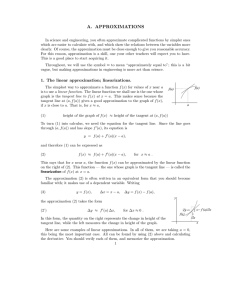( ) Section 3.11 Differentials Differential
advertisement
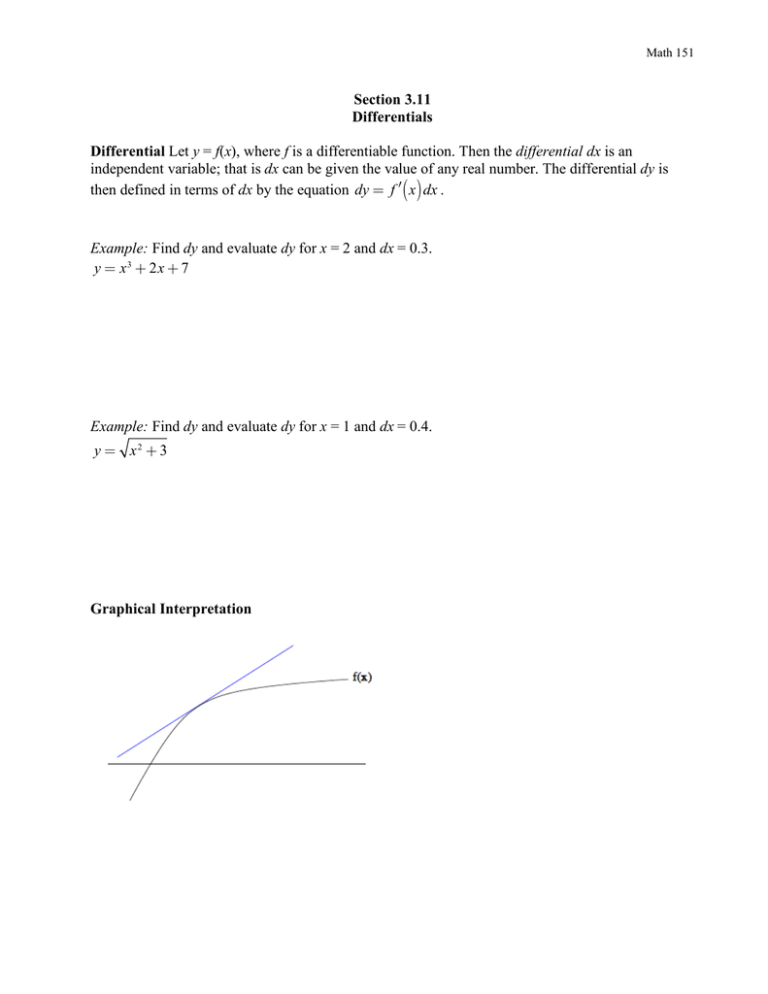
Math 151 Section 3.11 Differentials Differential Let y = f(x), where f is a differentiable function. Then the differential dx is an independent variable; that is dx can be given the value of any real number. The differential dy is then defined in terms of dx by the equation dy = f !( x) dx . Example: Find dy and evaluate dy for x = 2 and dx = 0.3. y = x 3 + 2x + 7 Example: Find dy and evaluate dy for x = 1 and dx = 0.4. y = x2 + 3 Graphical Interpretation Math 151 Example: Use differentials to estimate 4 16.1 . Example: Use differentials to estimate cos59° . Example: The edge of a cube is measured to be 20 inches with an error of at most 0.1 inches. What is the error in the volume? Math 151 Linear Approximation L( x) = f ( a) + f !( a)( x " a) is the linear approximation or linearization of f(x) at (x − a). Example: Find the linearization at a = 16 for f ( x ) = 4 x . Example: . y = x + 7 . A. Find the linearization at a = 2. B. Evaluate 9.06 and 11 . C. Find the values of x where the approximation is accurate to within 0.5. Math 151 Quadratic Approximation P ( x) = f ( a) + f !( a)( x " a) + f !!( a) 2 ( x " a) 2 is the quadratic approximation of f(x) at (x − a). Example: Find the quadratic approximation at a = 0 for y = sin x . Example: Find the quadratic approximation at a = 1 for y = x 4 + 3x 3 + 7x 2 + 5 .
